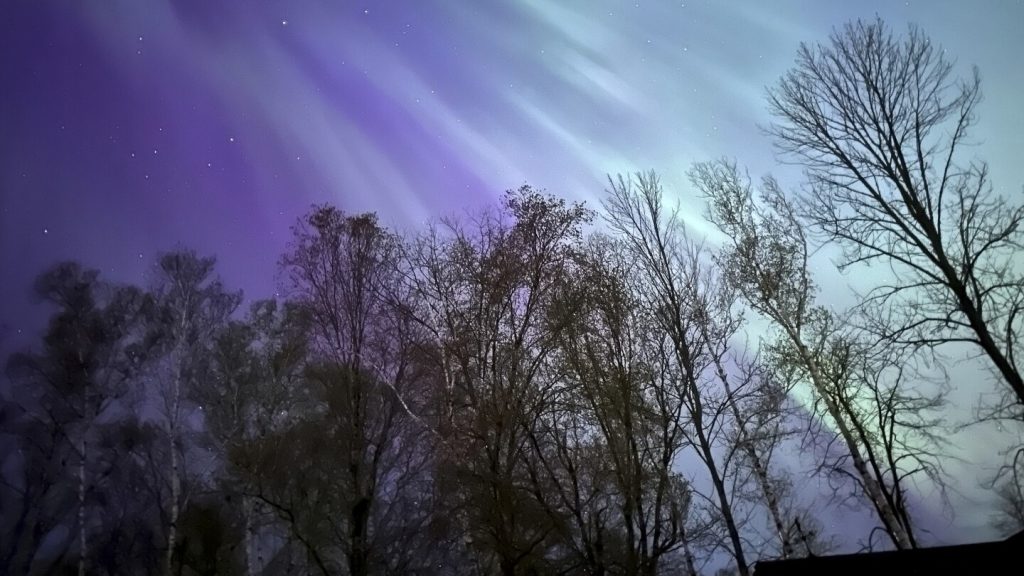A powerful solar storm put on an amazing skyward light show across the globe overnight, causing minor disruptions to the electric power grid, communications, and satellite positioning systems. The U.S. National Oceanic and Atmospheric Administration reported extreme geomagnetic storm conditions, with preliminary reports of power grid irregularities and communication degradation, but no significant impacts have been reported. The U.S. Department of Energy stated there have been no impacts on electric customers so far. NOAA predicted that strong flares would continue through Sunday and assured that the agency’s Space Weather Prediction Center was well prepared for the storm.
SpaceX’s Starlink satellite internet service experienced degraded service due to the solar storm, but CEO Elon Musk reassured that the satellites were holding up well under pressure. Brilliant hues of the Northern Lights were reported worldwide, with sightings in various countries including Germany, Switzerland, China, England, Spain, and the U.S. In the U.S., the lights were visible as far south as Florida, unusual for the region. People across states like Kansas, Nebraska, Iowa, Michigan, and Minnesota were able to capture photos of the colorful Aurora Borealis along the horizon, enhancing the spectacle caused by the solar storm.
With the solar storm persisting through the weekend, another chance to witness the Northern Lights was presented on Saturday night. NOAA issued a rare severe geomagnetic storm warning when the solar outburst reached Earth earlier than anticipated on Friday, alerting operators of power plants and orbiting spacecraft to take precautions. Scientists at NOAA’s Space Weather Prediction Center emphasized that the best views of the Aurora Borealis could be captured by phone cameras, which are more effective at capturing light than the naked eye. The solar storm poses a risk for high-voltage transmission lines and satellites, potentially disrupting navigation and communication services on Earth.
The sun has been producing strong solar flares since Wednesday, with at least seven plasma outbursts observed. Each eruption, known as a coronal mass ejection, can contain billions of tons of plasma and magnetic fields from the sun’s outer atmosphere. The solar activity is ramping up as the sun approaches the peak of its 11-year cycle. While the effects of the solar storm could disrupt power grids, communication services, and satellite navigation, precautions have been taken to minimize any significant impacts. The Northern Lights phenomenon caused by the solar storm has captivated people around the world, offering a rare and mesmerizing display of colorful lights in the sky, creating a unique experience for observers and photographers alike.


